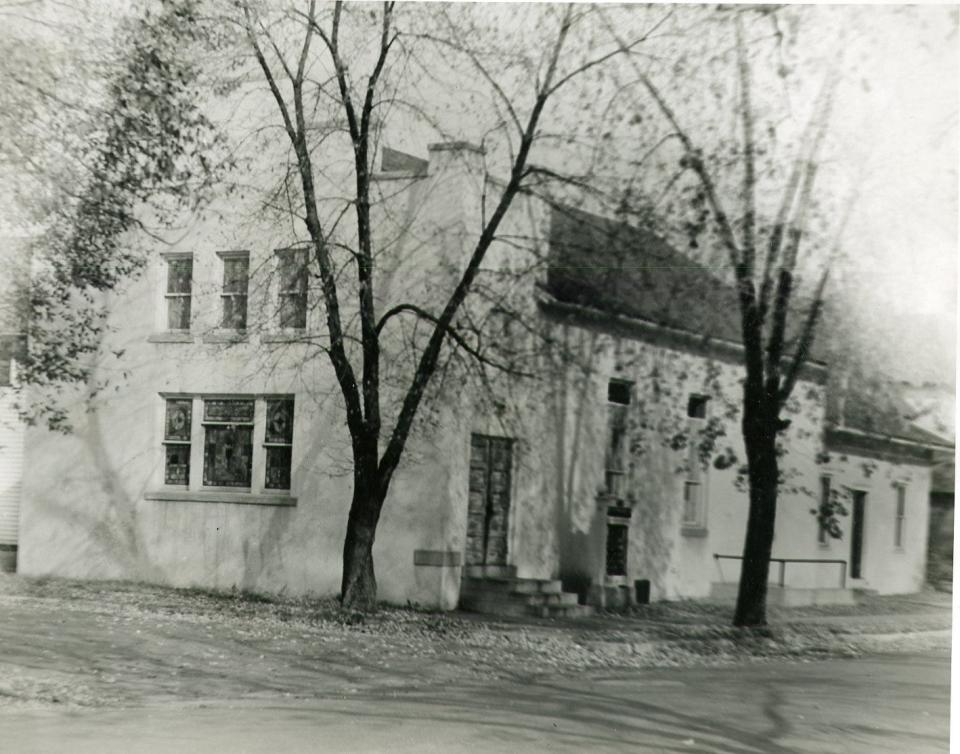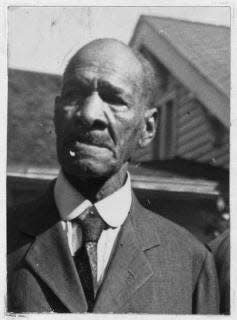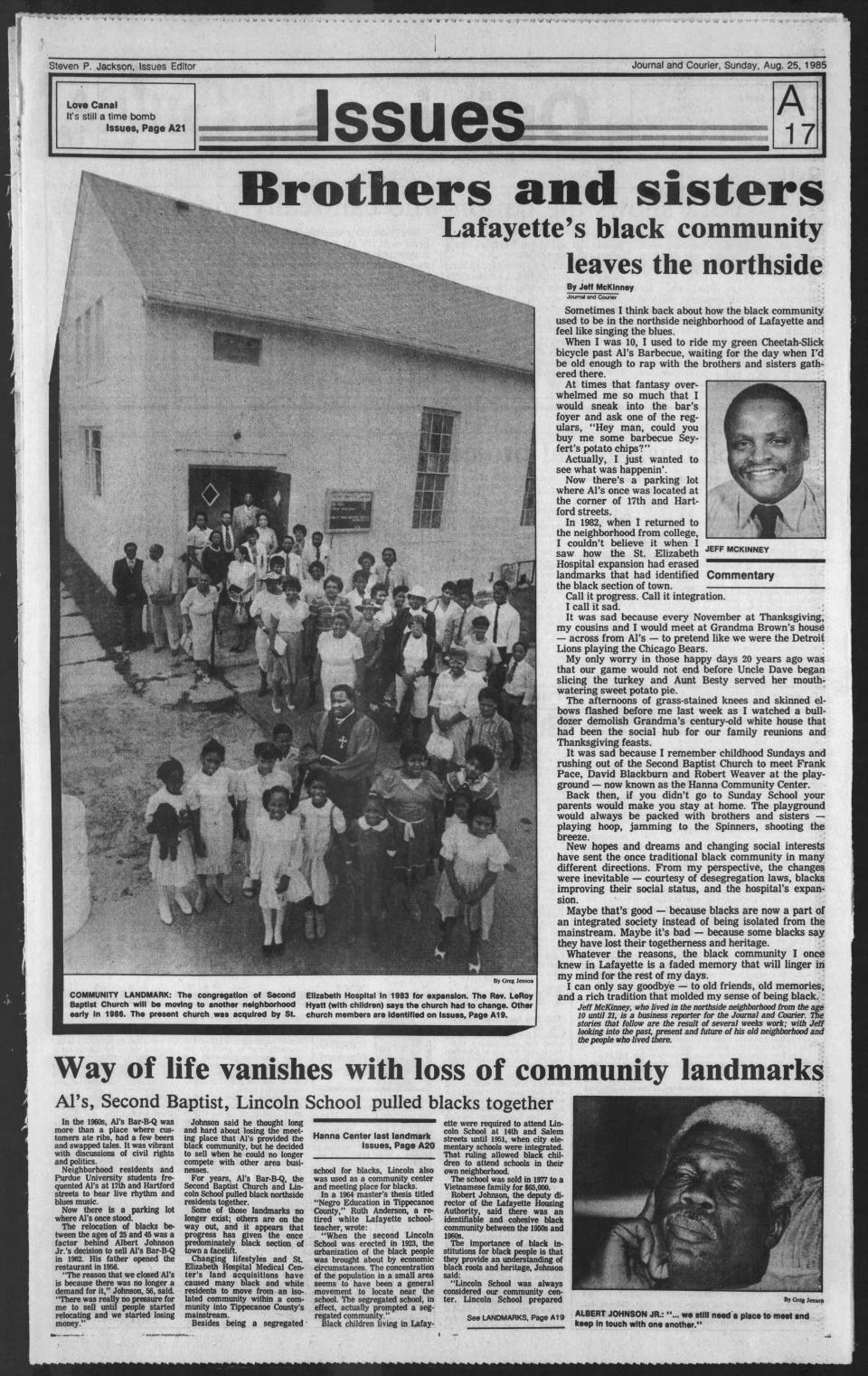The formation of Lafayette's Second Baptist Church and its lasting legacy
- Oops!Something went wrong.Please try again later.
LAFAYETTE, Ind. — Second Baptist Church stands as a pillar of faith with almost 152 years of Lafayette history, but just like everyone’s story, there was a beginning.
The church's early struggles and successes are documented in the records of the Tippecanoe County Historical Association’s collection, highlighting the church's specific struggles from 1872 to 1925.
Before the first bricks were laid, the aspirations for the church rose from a desire to worship in the Baptist traditions.
Prior to the Civil War, Lafayette’s small Black community mostly worshiped at the city's Bethel African Methodist Episcopal, which served as the social hub for faith, cultural, political and educational activities.

During and after the Civil War, former slaves made their way to Lafayette, bringing with them a longing for a familiar worship service.
Although initially small, this community formed the first Black congregation of the Baptist Church in Lafayette in 1872.
However, much of the church's history was not well documented in the local newspapers. Historically, if the Lafayette Daily Journal or Lafayette Daily Courier did cover any colored churches, it was primarily through ads, event previews or event coverage.
The formation of the Second Baptist Church
In 1872, the Rev. R. W. Pearson, a local pastor at the First Baptist Church noticed that several Black residents wanted to practice their Baptist faith, but couldn’t find a church.
Although he opened his church’s lecture hall for these residents to worship, Pearson wanted to give the residents their own home of worship, the historical association's archives indicate.
“Some time ago, the Rev. R. W. Pearson, pastor of the First Baptist Church; found quite a number of colored Baptists who failed to find a congenial field of Christian usefulness, and at the request of some twelve or more who desired the services of a colored Baptist preacher, the church lately granted the free use of the lecture room for religious service,” reads a report in the Lafayette Daily Courier published on Feb. 3, 1872.
On Feb. 2, 1872, Pearson invited the Rev. Moses Broyles of the Second Baptist Church in Indianapolis to meet with 12 black residents to hopefully establish a Black-serving Baptist church in Lafayette, according to the historical association's records.
Jackson Anthony, Mary Anthony, Jordon Scott, Caroline Scott, Cornelius Fletcher, Mary Fletcher, Katherine Wheeler, Elizabeth Scoot, John Fields, William Singleton and Broyles were the first 11 members of Lafayette’s Second Baptist Church.
Fields, who was born into slavery in Kentucky and escaped to the North when he was 16, became the first church member to be baptized by Broyles.
The new congregation held its first meeting in the basement of the Blue Ribbon Hall at 216 N. Sixth St. At the meeting, Broyles introduced the Rev. William Neal, a pastor from Indianapolis, and Neal lead the service that day.
At that meeting, it was decided that Neal would be the church’s pastor, and Jackson Anthony and Jordan Scott were elected as the church’s first deacons.
Until the congregation could afford a church building, which wasn't until 1877, the Blue Ribbon Hall served as the congregation’s worship center, but if the hall became unavailable, members held services at Sophia Carter’s parents' house located on 14th Street.
Because of the distance between Lafayette and Indianapolis, Neal only preached in Lafayette every other week and was paid $5 to cover the travel expenses each time he preached.
Initially, this cost was spread amongst nine of the churchgoers, but soon the cost was divided among four church members. Three of the men would give a dollar-and-a-half, while one woman would give 25 cents to help cover the cost, according to a document in the Tippecanoe County Historical Association’s collection.
Neal remained the church’s pastor for about a year before Fields became a licensed preacher and lead the church in 1874.
The church’s first two winters
After establishing the congregation, members attempted to persuade others to worship with them, but found little success in the first year.
Many “continued to sing in Jesus’s name,” and by the end of the second year, they welcomed 11 people into their congregation.
“In the bitter cold weather, they heated rocks to put in the bottom of the wagon and wrapped blankets around themselves to keep warm. They made no excuses and rain or shine, hot or cold were always ready to do their tasks in building up the Kingdom of God,” reads a document in the Tippecanoe County Historical Association’s collection.
Key to the church’s early success was Jordan Scott’s willingness to pick up worshippers and “sinners” in his two-horse wagon. Every Sunday at the break of dawn, Scott would collect everyone and haul them to that day’s meeting.
During the church's first three years of service, John Levering, a local real estate mogul who once invested up to $2 million into Lafayette and a former colonel in the United States Army during the Civil War, kept an eye on the church’s progress.
After years of observation, Levering proposed to church leaders that if every man belonging to the church paid him $35, then Levering would give the church a plot of land at 16th and Hartford streets. Levering also pledged to give the church 20,000 bricks for the church's construction.
When they learned about this deal, Scott, Fields and Thorton Cranshaw solicited money to meet Levering’s terms.

Out of the three men, Scott found the most success in obtaining donations for the church thanks to his two-horse team. Scott would enter town on an almost daily basis trying to raise money for the church’s construction. During this period, he became a familiar figure to many.
But beyond the men of the congregation, the women also raised funds for the church, as can be seen in an 1875 ad in the Lafayette Daily Courier, “the ladies of the Second Baptist Church (colored) of this city will tender their friends a strawberry and ice cream festival next Friday.”
The proceeds of these events went to construct the congregation’s new church, and seeing the congregation's progress, Levering permitted the members to begin building their new church.
Fields, Scott and Joseph Huffman worked to build the foundation of the building, hauling rocks and stones from the creek beds, fields and roads to build their church. In 1877, the Second Baptist Church was officially built for a total of $3,100.
“The new Baptist Church has been plastered and is now a very cozy little place of worship, and the congregation are to be congratulated upon the zeal with which they have worked to get their church complete,” reads an article published Sept. 27, 1879, in the Lafayette Daily Journal.
The challenges the Second Baptist Church faced after 1877
Although the congregation was able to build its first church in 1877, there were still plenty of challenges to unfold in the following years.
Several times the church did not have money to pay for the minister's salary, and during those hardships, Fields would preach the Gospel on Sunday.
In hopes of addressing these issues, the church constantly hosted community events in hopes of raising funds to cover the church's expenses — including costs for lodging for visiting ministers, pay the minister's salary and repay Levering for the loan to the church.
The church would also occasionally hold dancing contests, where people from the community could showcase their best “cakewalk” dance, a style of dance developed by formerly enslaved people as a subtle way to mock the formal, mannered dancing practiced by slaveholding whites.
“The festival given by the Colored Baptist at their church on Tippecanoe Street was a complete success. Twenty-five dollars was the net proceeds. The walking for the cake was quite a feature and was participated in by a large number,” reads an article published by the Lafayette Daily Journal on Feb. 21, 1879.
But beyond financial struggles, many church members still faced racial tensions, which were present in Indiana during the late 1800s.
“The announcement in the Saturday’s Journal that a number of colored persons would be baptized in the canal at the foot of Salem Street at noon on Sunday drew out a large crowd and we regret to say that considerable many persons who claimed to be 'white' people, who have good opportunities to learn what good manners are, conducted themselves in a disorderly manner, to say the least,” reads an article published on March 24, 1879, in the Lafayette Daily Journal.
“It is to be more regretted that those who made fun of the service were not confined to the small boys, who are usually charged with all that is bad, but it was grown persons who laughed loudest and said the funniest things, and still worse, the loudest were the females.
“It might have been thoughtlessness with some but all who acted badly cannot take shelter under the flimsy pretext. It is all wrong, and if it occurs again the names of the offenders as we are informed, will be handed into the Grand Jury.”
Debts paid
In 1896, the Second Baptist Church officially paid off its debts to Levering and had $64 in the church’s savings. The congregation had grown to a total of 83 members.

“All members took pride in doing what they could for the Church. Not for praise or name, but to advance the teaching of Christ, for as Paul said, 'Whether it be I or they, so we preach, and you believe. It is our business to sow and let the harvest be. For if the proper seeds are sown, the proper yield will be reaped,'” according to the ‘The History of the Second Baptist Church’ document in the Tippecanoe County Historical Association’s collection.
Unfortunately, the original church on 16th Street no longer stands. It was purchased for an undisclosed amount of money in December 1983 by St. Elizabeth Hospital Medical Center’s land acquisition, according to an article published Aug. 25, 1985, in the Journal & Courier. It was demolished and the church was relocated to its new location at 2925 S. 18th St. in Lafayette.
But since the church’s relocation, the congregation continues to grow and celebrated its 150th anniversary in 2022.
Noe Padilla is a reporter for the Journal & Courier. Email him at Npadilla@jconline.com and follow him on X at 1NoePadilla.
This article originally appeared on Lafayette Journal & Courier: The history of Lafayette's Second Baptist Church

